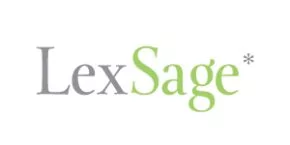An H.S. Tariff Classification Number is a 10 digit number that must be provided on import documentation in order to communicate what is the good that is being imported. Theoretically, every type of good is covered by the H.S. Tariff Classification Numbers and each good can be matched with a number. The Canada Border Services Agency ("CBSA") requires that an H.S. Tariff Classification Number be provided in Box 27 on B3 Customs Coding Form as a way to identify the goods that are being imported. The H.S. Tariff Classification Number is also required on many other ("CBSA") forms.
H.S. Tariff Classification Numbers are based on the World Customs Organization's ("WCO") International Convention on the Harmonized Commodity Description and Coding System, Can. T.S. 1988 No. 38. Canada is a signatory to this Convention. The Harmonized Commodity Description and Coding System (the "Harmonized System") is the system by which approximately 5,000 commodity groups of imported goods are classified. CBSA officials meet in Brussels with their counterparts to discuss the H.S. Coding System and make adjustments and amendments that are agreed by WCO members. As a result, the H.S. Tariff Classification Numbers can and do change and evolve.
The H.S. Tariff Classification Number for use in Canada for the classification of goods is contained in the Customs Tariff, S.C. 1997, c. 36 , which implements Canada's obligations as a party to the Convention.
The Harmonized System uses an eight-digit classification system for tariff classifications, which is incorporated into the Schedule to the Customs Tariff. The Harmonized System proceeds, within sections of the Schedule, from general to specific classifications via chapters, headings, subheadings and tariff items. The digits of an H.S. Tariff Classification Number may be broken down as follows:
Numbers 1 & 2 : Applicable Chapter
Numbers 3 & 4: Applicable Heading
Numbers 5 & 6: Applicable Subheading
Numbers 7 – 10 are usually specific to individual countries – Canada uses these digits for Statistics Canada purposes.
Numbers 7 & 8: These subdivisions have been created to provide further product detail for domestic tariff purposes. As with headings and subheadings, not all tariff items have been subdivided, in which case the seventh and eighth digits are zeros. The dash structure is similar to the subheading level, but with three or four dashes before the description.
Numbers 9 & 10: These last two digits are also referred to as statistical suffixes. Again, not all have been subdivided, in which case the ninth and tenth digits are zeros. At this level the description is preceded by five or six dashes.
In other words, the first 6 digits (that is digits 1-6) should be the same regardless of the importing country. These are the internationally recognized numbers for the classification of goods.
In reality, there can be differences between importing countries due to government policy statements, interpretations, advance rulings, court cases, etc.
Determining what is the appropriate H.S. Tariff Classification for a particular good is a complicated process. There are customs lawyers, consultants and customs brokers who are familiar with the Customs Tariff, the Chapter Notes, Explanatory Notes, the General Rules, interpretations, case law, etc.
If you would like to test whether your goods are properly classified, there are tools which are not perfect – but are a starting point. The following resources may be used to look up an H.S. Tariff Classification Number:
Statistics Canada – Canadian Export Classification
Canadian Automated Export Declaration Online
Industry Canada's- Canadian Importers Database
However, as noted by the Supreme Court of Canada in Attorney General of Canada v. Igloo Vikski Inc., tariff classification is very complicated. Using the tools is helpful, but may not result is the correct H.S. Tariff Classification Number being identified. The CBSA may not accept an H.S. Tariff Classification Number determined using the tools.
The content of this article is intended to provide a general guide to the subject matter. Specialist advice should be sought about your specific circumstances.

